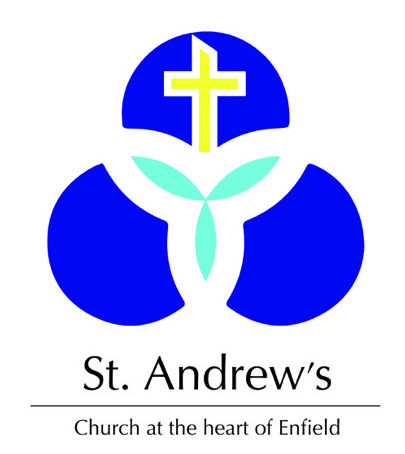Richard Fountaine

Richard Fountaine is a typical example of the 17th and 18th century merchants who, having made their money in the City of London, relocated to Enfield in semi-retirement.
Fountaine was 62 when he brought his property ‘in Baker Street near Enfield Green’ and we know that it consisted of three main bedrooms, a best parlour, a little parlour, a large hall, servant quarters, closets, kitchen, cellar, buttery, a brewhouse, a yard, outbuildings, barns, fishpond, canal, ‘grounds and a garden where he grew cucumbers. To help them keep their home, the Fountaine’s employed a manservant, a coachman, a housemaid, a cook and a ‘carer’ – Christian Fountaine (no relative).
Richard’s life followed the familiar pattern of other merchants memorialised in St Andrew’s. The son of a modest, if comfortable, yeomen (farming) family, from Linton in Yorkshire, Richard came to London to become a merchant and entered the Worshipful Company of Broderers (embroidery). Successful in his endeavours as a purveyor of ‘small wares’ such as playing cards, pins, caps, toys, braid and lace, Richard made sufficient money and connections to marry into the powerful Jekyll family. Richard married Elizabeth Fountaine, nee Jekyll, sometime around the early 1670’. But it was Richard’s dealings as a money lender, a common activity of successful merchants and the precursor of banks as we know them today, which appears to have been the greater source of his wealth and his passion – Richard continued to lend money and be interested in the detail of money lending, well into his 70’s.
The shield on the top of ledger stone tells us that, in common with the other merchants who had made their money in the city and retired to Enfield, Richard was keen to ensure his wealth not only brought him prosperity, but that it also provided him with access into the higher echelons of society.
As the son of a yeoman, Richard’s family would have been free from but, none-the-less, subservient to, the local nobles and, therefore, they would not have been entitled to bear, nor did they have, their own coat of arms. The Fountaine ‘coat of arms’, marshalled on the shield with the Jekyll coat of arms, as would commonly portray a marriage between the two families, is, in fact, completely fictitious. The use of the elephants head appears to be borrowed from a completely unrelated Norfolk family by the name of ‘Founteynes’ and/or be a ‘… pun on the surname Fountaine, as the spraying of water through the trunk of an elephant might resemble a fountain.’ Inventing a family fiction in this way was not uncommon in the 18th century but, none the less, it demonstrates a rather crass attempt, by Richard, to be seen as a bona-fide member of the gentry. Indeed, records show that Richard had been using the same coat of arms since 1687, long before settling in Enfield.
The main means, however, by which newly wealthy merchants sought to leverage their wealth to obtain the differentiation and status of a noble gentleman, was through their engagement in Christian charity. This said, in Richard’s case, being by all accounts a prudent man, he appears to have only engaged in charitable giving later in life.
However, once settled in Enfield, Richard provided money to the well-being of the poor through his engagement as a governor for St Thomas Hospital in London and, jointly, ‘…funded the extension to the upper gallery of St Andrew’s, […] with one Thomas Woodcock’.
But it would be the bequests in his last will and testament that would set him apart. Dying with no children and two years after his wife, Richard left an estate worth approximately 8.5 million in today’s money, instructing his executors to pay various legacies and bequests. These included further sums to St Thomas’ hospital, monies to the poor of Enfield and London, an endowment for a hospital almshouse in his home village of Linton and a good sum to his carer – Christian Fountaine.
It is the latter two bequests that particularly stand out. The second, because it was nearly forfeited when Christian married against the stipulations of the bequest. The first, because of the imposing nature of an almshouse in a small Yorkshire village that, by all accounts, was not in particular need of one. This raises obvious questions concerning Richard’s motivations in bequeathing one, but whatever his motives, establishing a hospital echoes the sense of obligation that London merchants had felt towards the poor and infirm, since the dissolution of the old monastic hospitals by Henry VIII.
